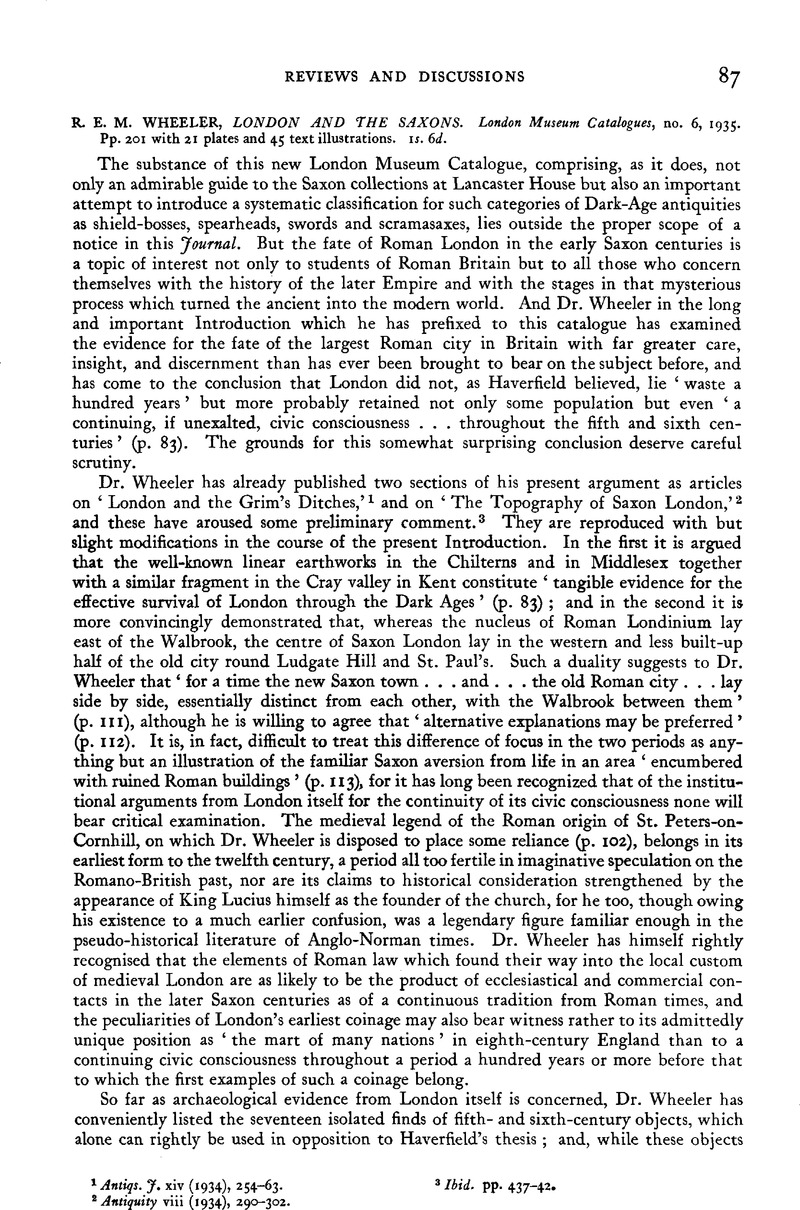No CrossRef data available.
Published online by Cambridge University Press: 24 September 2012

1 Antiqs. J. xiv (1934), 254–63Google Scholar.
2 Antiquity viii (1934), 290–302Google Scholar.
3 Ibid. pp. 437–42.
4 Life of Wilfrid (ed. Colgrave, 1927), c. 42.
5 Antiquity ix (1935), 458–64.Google Scholar
6 Introduction to the Survey of English Place-Names (1924), 52.
7 Birch, Cart. Sax. 34, see Eng. Hist. Rev. xxxiii (1918), 435Google Scholar, n. 11.
8 Birch, Cart. Sax., 182.
9 Introduction to the Survey of English Place-Names (1924), 50.
10 Dr. Wheeler quotes Mr. Horace Round as observing that ‘Middlesex was never separate from London’ (p. 70). Apart from the abbreviated telegraphic headline to p. 349, this observation is not to be found in the twenty-six pages of Geoffrey de Mandeville (pp. 347–73) to which Dr. Wheeler somewhat vaguely refers: what Mr. Round does say, with the verbal accuracy which made him so redoubtable a controversialist, is (p. 353), ‘As far back as we can trace them [italics mine] they are one and indivisible.’ Both Dr. Wheeler and I are speaking of a period long before that in which it was relevant for Mr. Round to look for the origins of London's shrievalty.
11 Bede, , Hist. Eccles. ii, 6Google Scholar.